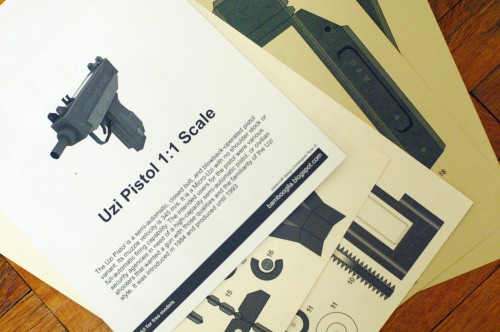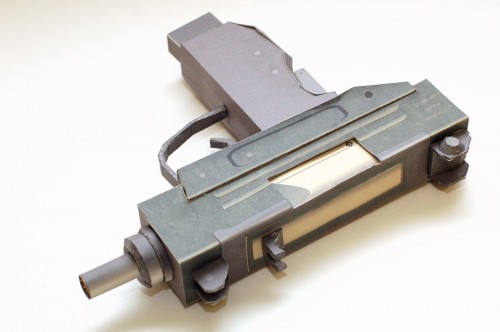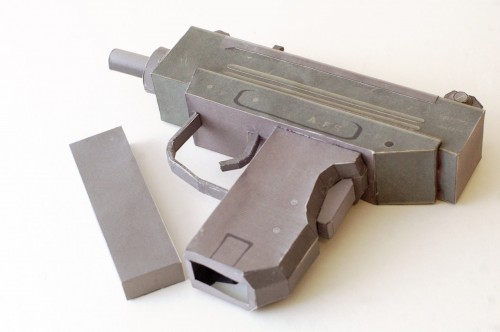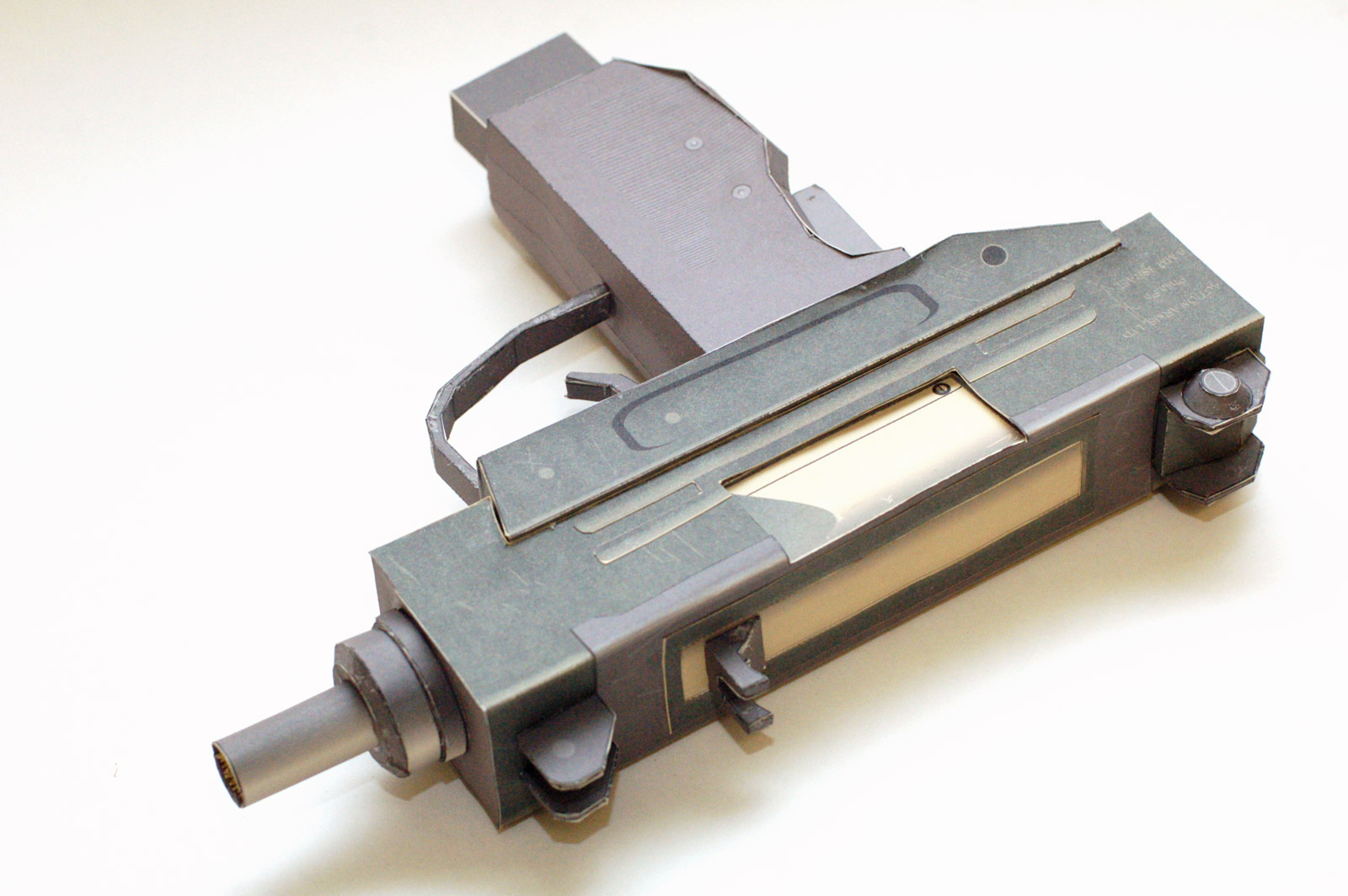What is pepakura? Pepakura (or ペーパークラ) is a Japanese word which refers to the art of papercraft. In papercraft, you cut and fold paper (or heavier card stock) apart and glue the pieces together to create a three-dimensional object. This is different from origami (折り紙) in which a single sheet of paper is folded into a shape without cutting or gluing.

Papercraft first began appearing in magazines as printing became ubiquitous. It really boomed during World War II when paper remained one of the few materials to not be rationed in the US. When I was younger, I received a book called Make Your Own Working Paper Clock, in which you cut the book apart, assemble according to the instructions, and you are left with a working clock made completely out of paper (and a few paper clips). It took me awhile to work the courage up to actually start building it; I was in my late twenties when I began. Unfortunately, our apartment building burned down, including most of that book, and all I was left with was the center wheel.
Besides being a fun hobby unto itself, the ideas behind papercraft can find their way into props. Paper, card stock and cardboard are inexpensive materials which are easy to manipulate, so they lend themselves to quick mock-ups. You can whip together a quick papercraft model to help you figure out the scale and proportions of a complicated prop, or to help you determine complex angles and measurements. They can even be used for quick rehearsal props. Last year–no kidding–we made a Victrola with a giant cardboard horn coming out of the top for Merchant of Venice rehearsals. It allowed the director and actors to see whether that large of a prop would work with their intended staging before we committed to purchasing an expensive antique.

In addition to making your own models, you can search for papercraft models all over the internet; most come in common PDF or graphics files which you simply print out and start building. They can also feature colors and graphics to spice up your model. I recently finished the scale model Uzi pictured above in such a manner. It even features a removable magazine clip:

The term “pepakura” became more popular in the West with the introduction of a computer program from Japan called Pepakura Designer. The software takes a 3-dimensional object and turns it into a papercraft model; it arranges the individual pieces on pages you can print out, draws lines showing where to cut and fold, and even adds tabs for glue. Everything is labeled as well, so assembly is straightforward.
One of the more common sources of 3D objects for pepakura are video games. With the software, a hobbyist can print out the armor of his favorite video game character and wear it around. They began developing it into a construction method all its own, yielding strong and light-weight pieces. The basic method involves stiffening the outside with resin, then filling the inside with layers of fiberglass or some other stiffener; water-based materials are less popular because they warp the paper. Rather than tread the same steps already trod, I’ll point you to lists of resources which are far more comprehensive than I could hope to provide. The Replica Prop Forum has collected a huge thread of pepakura links, tutorials and tips. As I write this, it contains eleven pages of great information. The second great repository of pepakura information is at the 405th, an online community for people who build guns and armor from the HALO video games.

